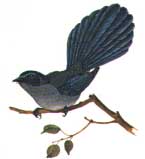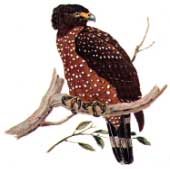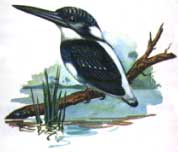Birdwatching FAQs
What’s the difference between birding and birdwatching? Birding and birdwatching mean the same thing — the activity of observing wild birds. Birds in cages or any form of captivity don’t count.
 What do people do when they go birding? Birdwatchers observe wild birds in their natural habitat. Birdwatching means learning to identify the birds and understanding what they are doing.
What do people do when they go birding? Birdwatchers observe wild birds in their natural habitat. Birdwatching means learning to identify the birds and understanding what they are doing.
Where do you watch birds? Birding is something you can do in your own back yard (it’s a habitat too), your local park, anywhere you travel, or on trips you take specifically to see birds that live in a certain environment, such as on a marshland in Candaba, or in the old-growth forests of the Northern Sierra Madre or in a more urban setting such as UP Diliman.
Who watches birds? People of all ages watch birds. It’s an activity you can keep doing all your life, in any part of the world.
Birding is the fastest-growing outdoor activity in America. According to a survey by the U.S. Fish and Wildlife Service, 51.3 million Americans report that they watch birds. And more are taking it up all the time.
Here in the Philippines, foreigners continue to visit remote forests to see birds that are only found in our country such as the Philippine Eagle.
 Why birds? Birds have always delighted people all over the world because of their beauty and their power of flight.
Why birds? Birds have always delighted people all over the world because of their beauty and their power of flight.
Historically, they used to be considered omens. The ancient Romans believed that the flights and calls of birds could foretell the future.
Today, modern science still uses birds as a kind of oracle. Changes in bird populations can reflect the health of the environment.
Some birds are indicator species. They forecast environmental conditions. The knowledge of birds can help us plan a better, more sustainable relationship with nature.
What’s in it for me if I start birding? Fun. Big fun. Something deep seems to get fulfilled. A connection is made with the immense beauty of nature.
Satisfaction. Birding invokes our primeval hunting instincts. It delivers all the satisfaction of the hunt, even though the prey itself escapes unharmed. Birding is the perfect sport for the coming century.
Health. Birding gets you vertical. It gets you outside and walking. But it’s effortless, because your attention is on the birds. Nevertheless, after a little birding, you’ve usually covered quite a bit of ground.
Family. Birding unites people across generations. By taking up birding, parents or grandparents can introduce their children to an interest in nature that will stay with them all their lives.
 Companionship. Birding is the ideal social activity. A birder need never be lonely. Nearly every community has a birding club of some sort. Well, at least in other countries. We can always start our own, you know. And because birders love to share their knowledge, newcomers are always welcome.
Companionship. Birding is the ideal social activity. A birder need never be lonely. Nearly every community has a birding club of some sort. Well, at least in other countries. We can always start our own, you know. And because birders love to share their knowledge, newcomers are always welcome.
Solitude. Birding is also the ideal solitary sport. There’s a special pleasure in going out alone to bird. Your mind settles down. Your senses open up, and all nature seems to become your friend. Birding is a sport of many moods, and it serves the causes of companionship and solitude equally well.
Does birding contribute to science? Birding also fulfills another basic instinct – the quest for knowledge. Birding is about acquiring knowledge. Not just about birds’ names, but also about their songs, their behavior, and how they relate to the rest of nature. It’s a perfect opportunity to enjoy a unique human pleasure – the successful exercise of lore.
In fact, amateur birders often get to make real contributions to scientific knowledge. Today, much of what ornithology knows about birds has come from the observations of ordinary but dedicated birders.
What do I need to start birding? Not much. A pair of binoculars, a field guide, and a hat. Maybe a little notebook you carry in your pocket.
What kind of binoculars do I need? Any binoculars are better than none. You can start with whatever you have. See the birding optics document for more on this topic.
Can I share binoculars with a friend? Every birder has to have his, or her, own binoculars. Sharing means one person doesn’t get to see the bird before it flies away. This is hard on friendships
 What’s a field guide? A field guide is a little book that’s packed with information about birds. It’s the next best thing to an expert birder by your side. It describes and shows pictures of the birds, and it tells you which details of each bird to look for.
What’s a field guide? A field guide is a little book that’s packed with information about birds. It’s the next best thing to an expert birder by your side. It describes and shows pictures of the birds, and it tells you which details of each bird to look for.
A hat? Any old hat will do. Birding is not a fashion contest. But it should shade your eyes and not interfere with using your binoculars.
What’s the notebook for? For your birding field notes. It lets you record what you see. It actually helps you to see, because when you try to write a description of a bird that encourages you to observe carefully.
Is birding expensive? Compared to other sports, birding is not expensive. A notebook, a field guide, and binoculars, all together will cost around the same as that of a good pair of athletic shoes. And they’ll take a lot longer to wear out. We assume you have a hat.
How do I get started with birdwatching? Well, you can always contact us (info@birdwatch.ph) and ask about the next guided birdwatching trip that is being planned. Or you can just get your things and head out to your nearest green area or to the coast.
Where should we go to see some birds? Generally, you could go birdwatching anywhere. You just need to be aware of your surroundings. But there are several sites popular to birders, just head on to list of sites we recommend both near and far.
 Anything else? Yes. Birding is a quest. You set out to see birds – but the prize you come back with can only be described as happiness. Learning to bird is like getting a lifetime ticket to the theater of nature.
Anything else? Yes. Birding is a quest. You set out to see birds – but the prize you come back with can only be described as happiness. Learning to bird is like getting a lifetime ticket to the theater of nature.
